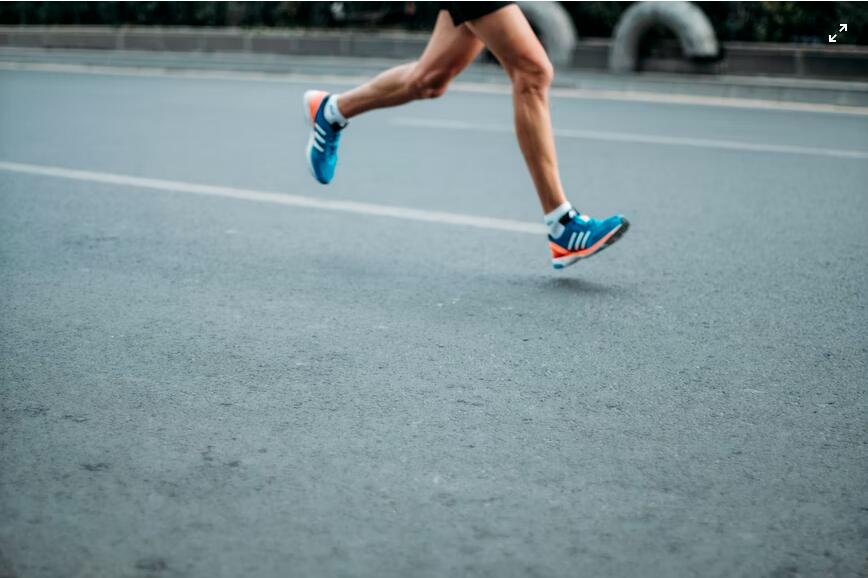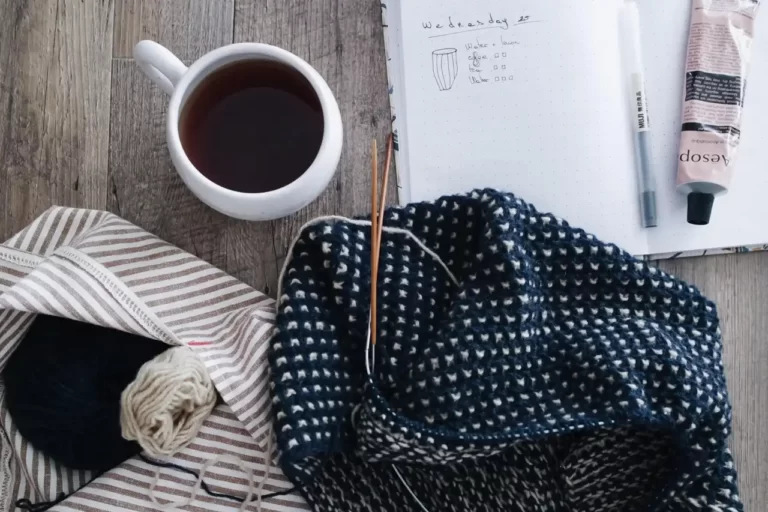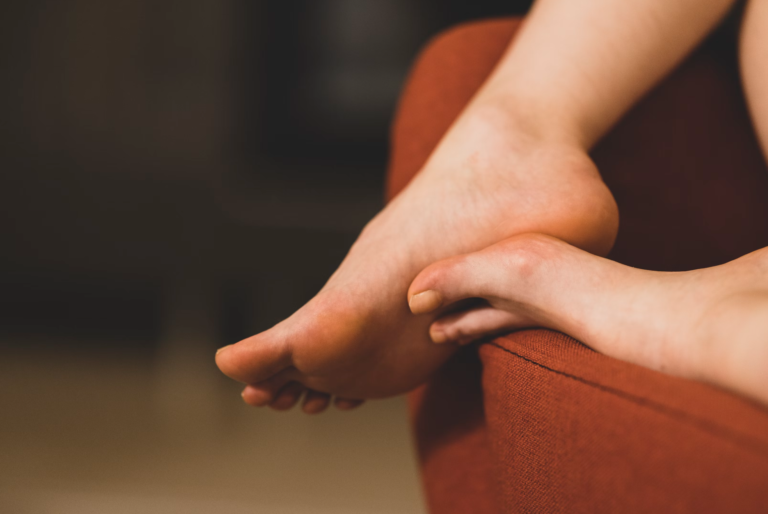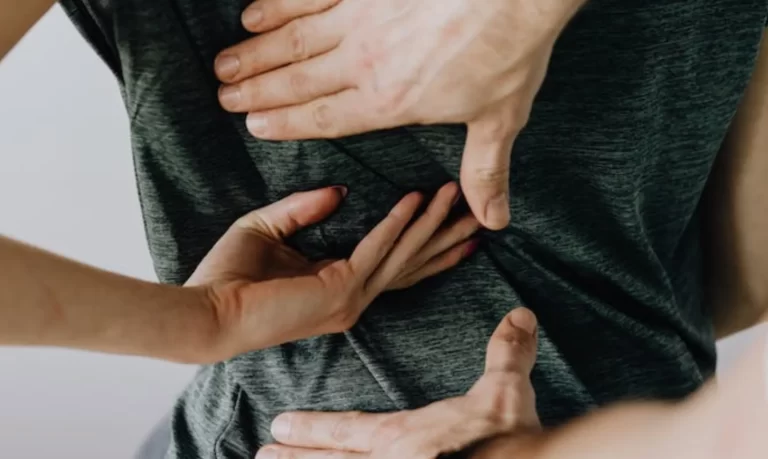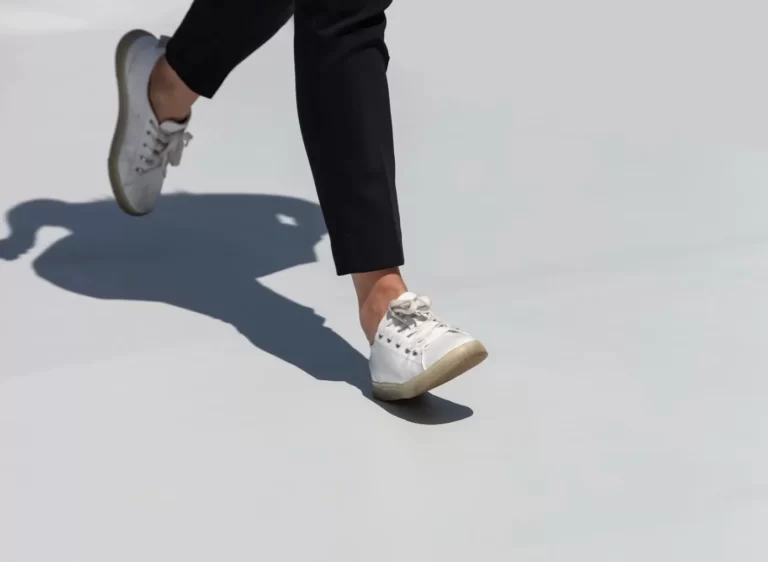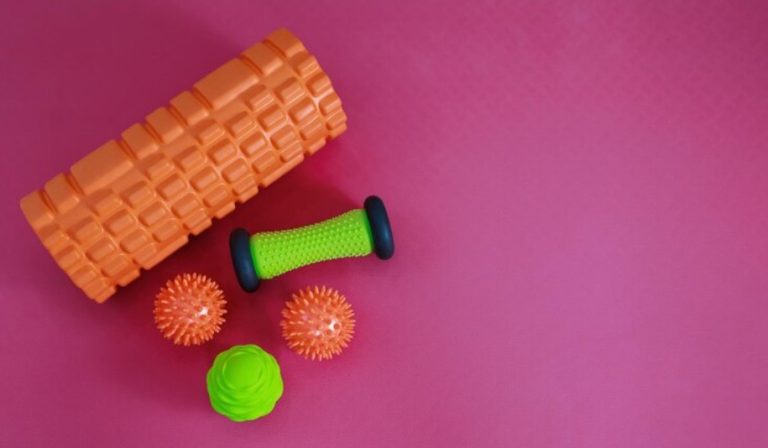21 Tips On How To Run With Flat Feet
Running with flat feet can seem like a daunting task. The thought of running on hard surfaces with little to no cushioning for your feet can make you question why anyone would choose this as a form of exercise. But if you’re well prepared and have the right equipment, running on flat feet can be an enjoyable and healthy way to keep fit! Here are some tips on how to run with flat feet:
1.See your podiatrist.
When it comes to foot problems, it’s always best to see a podiatrist. Podiatrists are trained in orthotics and can help you find the right shoe for your flat feet. They can also help if you have hammer toes or other foot problems that may affect how comfortable your shoes are.
2.Consider surgery in extreme cases
If you’ve tried everything else and still can’t run without pain, it might be time to consider surgery. This is a last resort, so don’t rush into it. Surgery is expensive and not always successful. It also requires multiple procedures and long recovery times, which may not appeal to your busy schedule or budget. You should consult with your physician about the risks involved before undergoing any procedure that involves cutting into your body—and especially before having foot surgery!
3.Ask a physical therapist to assess your gait and running style.
A physical therapist will be able to assess your gait and running style. They can help you find the best shoes for your feet and teach you stretching exercises that will strengthen them, so that you’re less likely to get injured in future races or workouts.
4.Wear custom orthotics.
Custom orthotics are made by a podiatrist, who will take an impression of your foot by casting it in plaster or sending you for an in-office scan. Once the mold is ready, it is sent to the lab where custom orthotics can be created from custom molds. These devices have been proven to help people with flat feet and other foot problems, so if you’ve tried everything else and nothing seems to work for your feet, this may be worth considering.
5.Avoid pointy toe boxes
You should avoid shoes with a pointy toe box. This can cause your foot to roll inwards and compress the balls of your feet, which can lead to pain and injury. Some people’s feet are naturally “overpronate” (they have a tendency to roll outward when they walk), so it’s even more important that they wear shoes with wider toe boxes because this will keep their toes from moving too far forward when running.
If you’re not sure whether or not a shoe has enough space for you, try wiggling all ten of your toes while standing up—if they move too much, then the shoe isn’t right for you!
6.You should buy proper shoes that suit the shape of your foot.
You should buy proper shoes that suit the shape of your foot.
- Shoes should fit your foot width.
- Shoes should fit the length of your foot.
- Arch support is important and can be found in many running shoes. You want to make sure that there is enough room for it to move freely so you don’t get shin splints or other injuries from poor arch support.
- Heel drop refers to how far back the heel extends from the rest of the shoe, which also affects how much impact each strike has on your joints and muscles throughout each stride or run cycle (depending on whether we’re talking about walking or running).
7.Support the arch with arch supports or insoles
If you’ve found your shoes are no longer adequate to support the arch, there are many options available.
- Custom orthotics can be made with a prescription from a doctor of podiatry. They’re specifically designed to fill in the gap between the bottom of your foot and the ground, allowing for more stability and support during running.
- Over-the-counter arch supports work well for mild cases of flat feet and can be purchased at most drugstores or sporting goods stores.
- Insole cushions are small pieces that slip into existing insoles for additional cushioning; they’re great if you need extra comfort but not much more than that.
- Gel insoles provide extra shock absorption due to their gel composition, which makes them great for runners with flat feet who experience pain when running on hard surfaces like concrete or asphalt (and even better when running on those surfaces after rain). Gel inlays also work well if you want some added cushioning without changing out your entire shoe type (e.g., going from an athletic shoe without an insert to one with a removable insert).
8.Increase your mileage slowly.
To prevent injuries and over-use problems, it’s best to increase your mileage slowly.
- Don’t increase your mileage more than 10 percent per week. This is a good rule of thumb for increasing the distance you run each week, no matter what pace you’re running at or how much weight you’re carrying.
- Start small—don’t try to go more than a mile per week, even if that feels like nothing at all! Remember that every runner has their own limits on how much they can handle in terms of new distances and paces, so don’t be discouraged if it takes a while for your body to feel ready for this kind of change. You can always take small steps toward bigger goals by gradually increasing the length of time spent running each day (and thus building up endurance), rather than increasing distance right away.
9.Never run two days in a row.
- Never run two days in a row: If you’re running with flat feet, it’s really important that you never run on consecutive days. Your muscles need time to recover and rebuild themselves, so if you don’t give them sufficient recovery time between workouts, they won’t be as prepared to handle the stress of your next workout.
- Don’t push yourself too hard: While it might seem counterintuitive since we just said not to run two days in a row, this is one of those times when “less is more.” When you’re recovering from an activity like running (or any other strenuous exercise), taking it easy for a day or two can help prevent injuries down the road. Just remember not to take things too far—in fact, if it’s possible for you at all given your schedule (and if getting adequate rest isn’t going to put undue strain on your body), consider sleeping in instead of waking up early just so that there won’t be any doubt about whether or not today counts as rest day!
10.Don’t forget about dynamic stretching before every run.
As a runner with flat feet, you need to do dynamic stretching before every run. Dynamic stretching will help to warm up your muscles and increase their flexibility. Dynamic stretching also helps reduce the risk of injuries by improving your running technique and preventing muscle tightness.
Stretching exercises should be done in a smooth, controlled manner without bouncing or jerking. Extend your ankles as far as possible while keeping your toes on the ground; hold for at least 20 seconds before repeating the movement on both sides (see figure 1).
11.Maintain a healthy weight
You’ve probably heard that maintaining a healthy weight is one of the most important things you can do to keep your body running at its best. You may not realize that being overweight or obese will also put your feet and legs under additional stress, which can lead to foot and leg problems.
Being overweight or obese puts more stress on your whole body, including the bones and muscles in your feet and legs. This extra pressure may cause muscle strains or tendonitis in these areas, which could potentially result in flat feet if left untreated. In addition, excess weight can cause arthritis symptoms such as pain while walking or standing on hard surfaces like concrete floors.
12.Watch out for injuries that are often associated with flat feet.
- Plantar fasciitis: This common condition occurs when the plantar fascia, which is the tissue that connects your heel bone to your toes, becomes inflamed. The pain typically occurs in the bottom of the foot and can be sharp or achy.
- Blisters: These are caused by excess friction between skin layers—often on the bottom of your feet where they rub against shoes as you run. They can become infected if they’re not treated right away. If you’ve ever experienced them before, it’s important that you know how to deal with them so they don’t cause problems while running.
- Tendinitis: A painful inflammation of tendons that connect muscles to bones (for example, Achilles tendonitis), tendinopathy refers specifically to overuse syndromes affecting joints such as the shoulder or elbow joint where repetitive movements aggravate underlying tissues causing inflammation and ultimately pain.* Stress fractures: These happen when small cracks develop on bones because of repeated stress placed upon them (such as running). They may also occur in areas such as ankles or heels due to high impact activities like walking down stairs.* Shin splints: Shin splints is an umbrella term for several injuries related to overuse injuries involving muscles just below your knees.* Achilles tendonitis & Heel Pain: Pain related directly from within either Achilles tendon itself (Achilles tendinopathy) or surrounding structures like calcaneal apophysitis (heel spur) will often lead people who experience these symptoms into believing that something more serious has occurred.
13.Don’t be afraid to cross train.
If you’re a runner who has flat feet, then you’re probably familiar with how your gait changes when your feet hit the ground. By taking some time off from running and focusing on other forms of exercise, however, you can keep your feet limber and prevent injury from developing in the first place. One easy way to do this is by mixing up the activities that you do during the week—try playing tennis or basketball once in awhile, or even hitting up a yoga class for an hour each day. If something feels painful or uncomfortable during these new workouts (such as shin splints), it’s important that you call it quits because they could be signs of another kind of injury altogether!
Don’t get lazy about your workouts either: make sure they are challenging enough so as not only improve strength but also flexibility too!
14.Try running on soft surfaces like sand or grass.
When it comes to running, the most common form of injury is getting flat feet. To avoid this and other injuries, try running on soft surfaces like sand or grass. Running on soft ground will reduce the impact on your joints and help you improve your speed and endurance. You’ll also have a lower risk of plantar fasciitis (inflammation in the foot) by avoiding harder surfaces such as roads or concrete.
15.Shorten your stride and land on your forefoot.
- Shorten your stride.
- Land on your forefoot.
- Don’t land on your heel.
If you’re running with flat feet, the way that you land can make or break whether you’ll be able to continue running in the long run. If you land on your heels, it can cause knee problems down the road (and if this happens when you’re out for a jog one day, it could spell a trip to the doctor’s office). However, if you learn how to shorten your stride and focus on landing more on your forefoot instead of hitting with both feet at once—which is called pronation—it will help prevent some of these issues from occurring in the first place!
16.Focus on strengthening exercises for your feet and lower legs
Here are some strengthening exercises you can do:
- Toes, ankles and calves. To strengthen the muscles that allow you to push off when running, squeeze a rubber ball with your toes or roll an orange under each foot.
- Feet and ankles. Lift your toes up and down, put them on the floor, then lift them again. This forces your ankle overuse syndrome (AOS) arch to bend more than usual—and strengthens it faster! You can also try toe raises by standing on one leg while lifting the other knee up toward your chest; heel walks by walking forward on tip-toes; or heel raises by standing on one foot while raising up as high as possible while keeping arms straight at sides or together in front of chest (with hands clasped, palms facing inward).
- Lower legs and hips. Standing hip circles involve circling one leg around clockwise and then counterclockwise 10 times each direction (20 total). Repeat with both legs at once for extra work!
17.Gently stretch out tightness in your calves and Achilles tendons.
Stretching is important.
Stretching before and after running will help reduce the chance of injury, and stretching after a run will help prevent stiffness. However, it’s not enough to just stretch your calves or Achilles tendons if you have flat feet. You need to gently stretch out tightness in those areas for at least 10 minutes every day for at least two weeks.
18.Get some ice on those feet as soon as you finish running.
After your run is over, get some ice on those feet as soon as you can. This helps to reduce swelling and pain; use a bag of frozen peas or a plastic bag filled with ice cubes. Apply for 10-15 minutes and feel the relief!
If the area is sensitive, apply an elastic compression bandage over the ice pack to provide additional support. You’ll notice that your foot won’t feel quite as sore after this post-run treatment.
19.Give yourself a foot massage after every run.
After every run, give yourself a foot massage. Use a tennis ball to roll out the bottom of your feet, or a golf ball to massage the tops of your feet. If you don’t have access to these types of balls (or don’t want to spend the money), you can use a rolling pin instead. You should also try using wooden spoons on both sides of each foot for 20-30 seconds each side; this will help stretch out the muscles in your legs and mimic what might happen if you were using something like a foam roller on them while they’re moving quickly through space during an intense workout session.
When designing a full-body stretching routine that’s specific specifically towards people with flat feet (or any other type of mobility issue), it’s important that you not only address problem areas but also make sure that everything else gets stretched out too! For instance: if someone has flat feet then chances are good that their calves won’t be getting much attention as compared with other parts such as thighs/hips/shoulders… which means those muscles may become overworked due lack slackening because there isn’t enough activity elsewhere being done at equal intensity levels.”
20.Reduce the risk of injury due to wear and tear
Your footwear needs to be changed periodically to reduce the risk of injury due to wear and tear on the soles of the shoes. Running shoes are designed with lots of cushioning to absorb some of the shock from running, but they will gradually lose their ability to do so over time. When this happens, you’ll notice that your feet start feeling sore after a run or two (or maybe even after one). This can be particularly dangerous if you’re doing longer runs or mixing up your workout routine by adding hills or speed training into your workouts. The best way to prevent this is by replacing your running shoes every 300-500 miles (about 4 months) if you’re running more than 10 miles per week or 6 months regardless of how much you run each week.
21.Avoid running on hard surfaces
Running on hard surfaces is not good for your feet. It’s a fact that you run differently on different types of terrain, but running on concrete and asphalt over time can cause injuries like shin splints and stress fractures.
It’s important to consider how much you run each week, whether it be for exercise or just getting to work in the morning. If you do decide to ramp up your mileage during your training plan then make sure that you are wearing good quality insoles with plenty of cushioning underneath them!
Conclusion
After reading this article, you should have a better understanding of what it means to run with flat feet. You may also want to try out some of the exercises listed above to help strengthen your feet and ankles. Remember that running is not easy for everyone and that if you are having trouble then it is okay to take a break from running or switch up your workouts.

